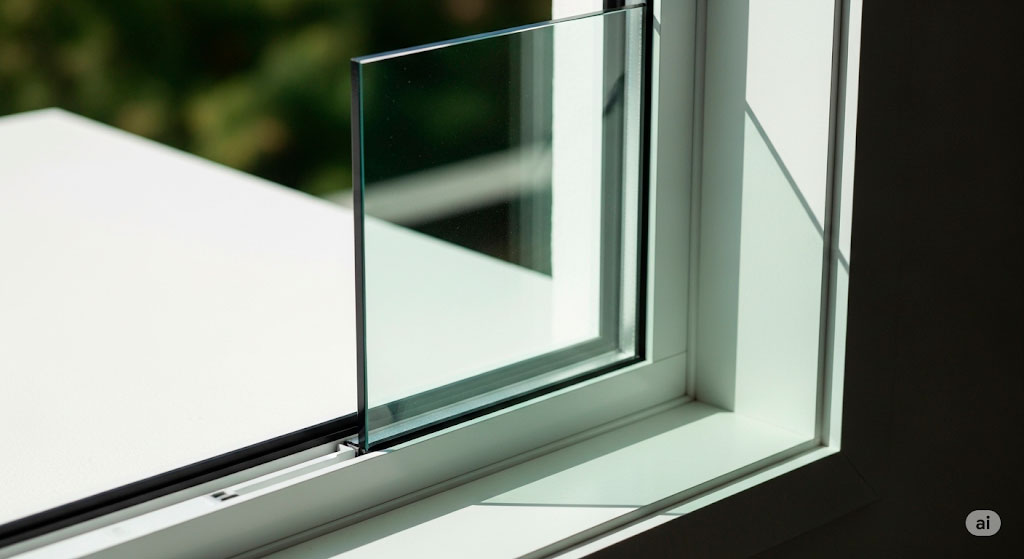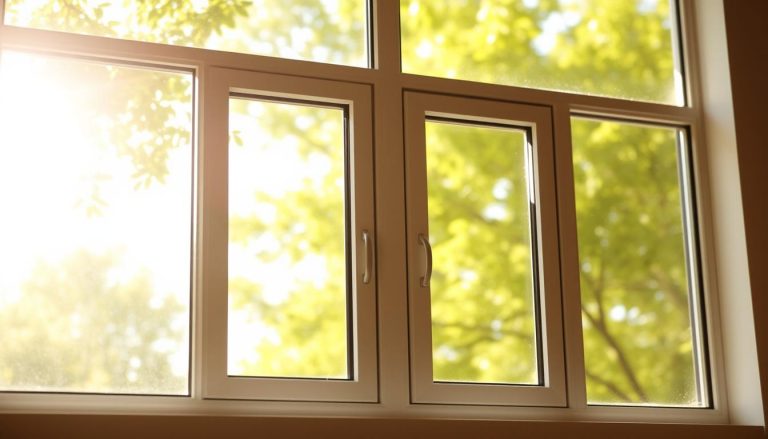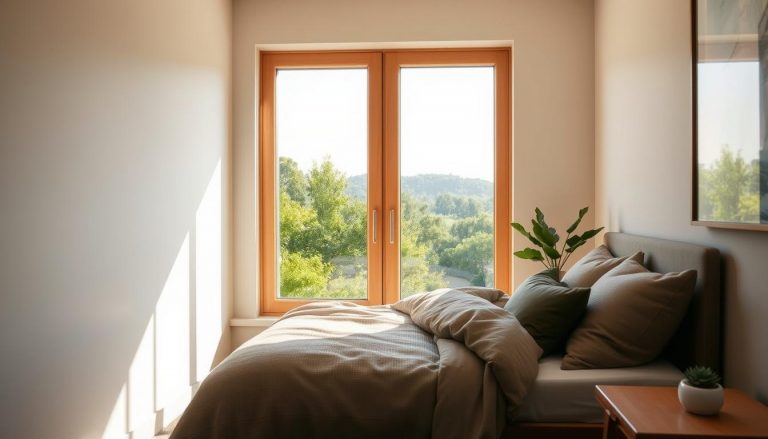A window pane is a single sheet of glass fitted within a window frame, serving as the primary barrier between your home’s interior and the elements outside. Modern buildings typically feature either single pane windows or advanced multi-pane systems that offer superior insulation and energy efficiency. Understanding the different types, manufacturing processes, and replacement options can help Ontario homeowners make informed decisions about their window replacement needs.
Window Replacement Near Me
What is a Window Pane?
The term “window pane” literally refers to the glass component of any window system. Most people use this definition to describe the transparent section that allows light to enter whilst keeping wind, rain, and air from penetrating the building envelope. In residential applications, a pane of glass can range from a single sheet in traditional designs to multiple layers in contemporary energy-efficient systems.
The word “pane” has an interesting history – originally derived from Latin, the Romans used similar terminology to refer to cloth panels that covered window openings before glass technology became widespread. Today, the meaning has evolved to specifically describe the glass sheets that fill the sash of modern window frames.
Types of Window Panes
Single Pane Windows
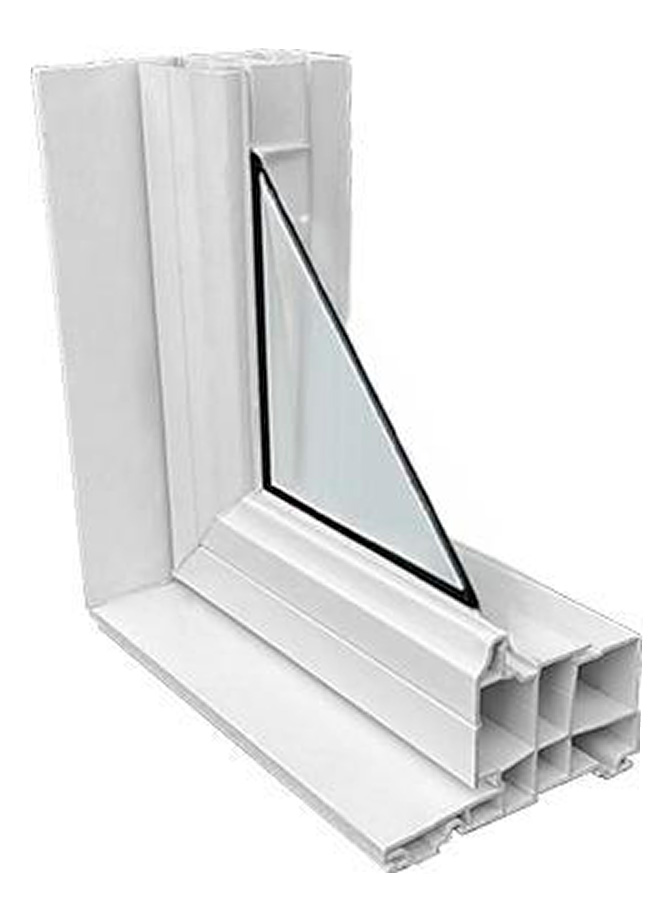
Single pane windows consist of just one layer of glass mounted within the window frame. These traditional designs were common in older homes throughout Ontario and remain present in some heritage buildings. Whilst single pane systems are straightforward and cost-effective, they offer limited insulation compared to modern alternatives.
Advantages of single pane windows:
- Lower initial cost
- Simple replacement process
- Easy maintenance
- Suitable for heritage restoration
Disadvantages:
- Poor thermal performance
- Minimal sound insulation
- Higher energy costs
- Condensation issues in Canadian climates
"Single pane windows can work in certain applications, but for Ontario's climate, we typically recommend upgrading to more efficient options," says Cherry Jian, Sales Consultant at Total Home Windows and Doors.
Thermopane (Double/Triple Glazed) Windows
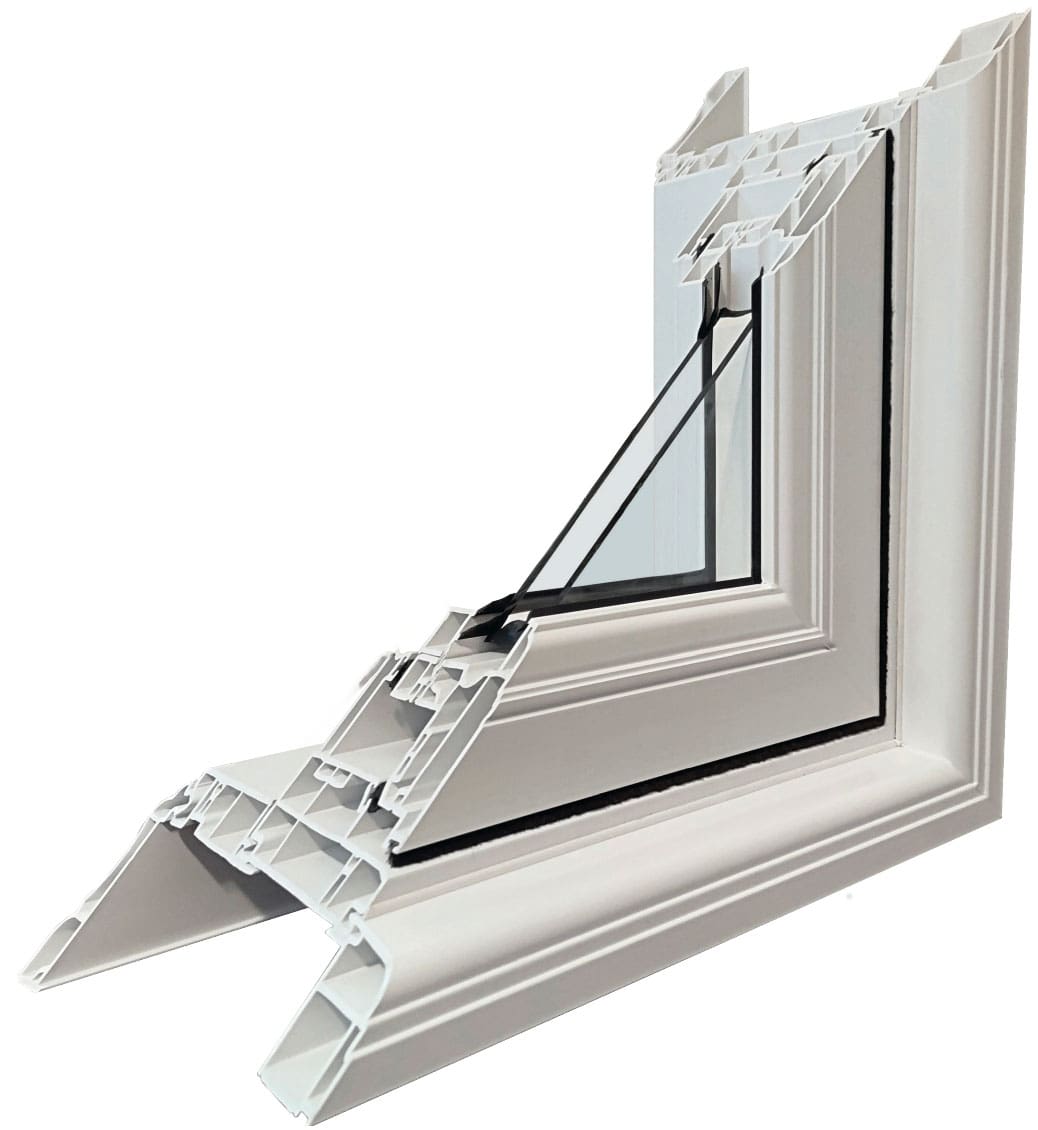
Thermopane windows, also called insulated glass units (IGUs), feature two panes or more separated by spacers and sealed with inert gas between the layers. This technology represents a significant advancement over traditional single sheet designs, offering superior performance in residential applications.
Benefits of multi-pane systems:
- Enhanced energy efficiency
- Improved sound reduction
- Better condensation control
- Increased security
- UV protection for furnishings
Modern energy efficient windows often incorporate low-E coatings and argon gas fills to maximise thermal performance. German and Swedish manufacturers have pioneered many innovations in this technology, though Canadian companies now produce world-class systems suited to local conditions.
| Window Type | Glass Layers | Insulation Value | Best Application |
| Single Pane | 1 | Poor | Heritage homes, workshops |
| Double Pane | 2 | Good | Most residential |
| Triple Pane | 3 | Excellent | High-performance homes |
Window Pane Manufacturing Process

The manufacturing process for window panes involves several precise steps to ensure quality and performance:
- Glass Production: Float glass creation begins with molten glass floating on a bed of molten tin, creating uniform thickness and smooth surfaces suitable for residential use.
- Cutting and Shaping: Sheets are cut to specific dimensions based on the window frame requirements and architectural specifications.
- Tempering (when required): Safety glass undergoes heat treatment to increase strength, particularly important for doors and large window sections.
- Low-E Coating Application: Modern glass windows receive specialised coatings to improve thermal performance whilst maintaining transparency.
- IGU Assembly: For multi-pane units, spacers filled with desiccant materials separate the glass layers, creating an airtight seal.
- Quality Control: Each finished unit undergoes testing to ensure proper sealing and performance standards.
"Our manufacturing process combines advanced technology with traditional craftsmanship to deliver windows that perform exceptionally in Ontario's challenging climate," explains Eugene Siukayev, Project Manager at Total Home Windows and Doors.
Materials and Technology
The choice of materials significantly impacts performance. Vinyl windows offer excellent value, whilst aluminum frames provide modern aesthetics. The sash design, wall integration, and roof line considerations all influence the final installation approach.
Window Pane Replacement
When Replacement Becomes Necessary
Several indicators suggest it’s time to replace your window panes:
- Visible cracks or breaks in the glass
- Fogging between panes in IGU systems
- Excessive condensation on interior surfaces
- Rising energy costs due to poor insulation
- Difficulty operating windows due to frame issues
- Upgrading for improved aesthetics or functionality
Replacement Process Steps
- Assessment and Measurement: Professional evaluation of existing frames and precise measurements for new units
- Material Selection: Choosing appropriate glass type, frame material, and hardware options
- Removal: Careful extraction of old panes whilst preserving reusable frame components
- Preparation: Cleaning and repairing the frame, sill, and surrounding wall area
- Installation: Fitting new panes with proper sealing and weatherproofing
- Finishing: Final adjustments, testing operation, and exterior/interior trim work
"Proper installation technique is crucial for long-term performance - we take extra care with sealing and alignment to prevent future issues," notes Daniel Klein, Project Manager at Total Home Windows and Doors.
Window Pane Specifications
Thickness Standards
Window pane thickness varies depending on application and performance requirements:
Single Pane Systems:
- Standard residential: 3/32″ to 1/8″ (2.4-3.0mm)
- Commercial applications: up to 1/4″ (6mm)
Multi-Pane Systems:
- Individual panes: typically 1/8″ (3mm)
- Air/gas space: 1/4″ to 1/2″ (6-12mm)
- Total unit thickness: 1/2″ to 1″ (12-25mm)
Performance Ratings
Modern window panes must meet specific performance criteria for Canadian conditions. Energy Star ratings, air infiltration standards, and structural requirements all factor into product selection for businesses and residential applications.
| Specification | Single Pane | Double Pane | Triple Pane |
| U-Value | 5.0-6.0 | 2.0-3.0 | 1.0-1.5 |
| Sound Reduction | Minimal | Good | Excellent |
| Lifespan | 15-20 years | 20-25 years | 25-30 years |
Cost Considerations for 2025
Window pane replacement costs vary significantly based on several factors:
Single Pane Replacement:
- Materials: $30-80 per pane
- Labour: $50-150 per window
- Total range: $80-230 per window
Double/Triple Pane Systems:
- Standard sizes: $200-500 per window
- Large casement windows: $400-800
- Custom shapes: $500-1200+
Factors Affecting Price:
- Window size and complexity
- Glass type (low-E, tempered, laminated)
- Frame material and hardware
- Accessibility and installation difficulty
- Geographic location within Ontario
For comprehensive windows pricing information, consider consulting with sales manager who can assess your specific requirements and provide detailed estimates for your project.
The choice between window pane types ultimately depends on your family’s needs, budget considerations, and long-term energy goals. Whether you’re maintaining heritage character with traditional single panes or upgrading to high-performance systems, understanding these fundamentals helps ensure the best outcome for your Ontario home.
Frequently Asked Questions About Window Panes
Is it a window pane or Payne?
It’s “window pane” – referring to the glass piece in your house windows. “Payne” is a surname. The correct spelling relates to the old French “pan” meaning cloth panel.
What is the pane of the window called?
The glass sheet within a window frame is called a windowpane or simply “pane.” In casement windows, each individual glass piece serves as the primary face for light and ventilation.
What is window pane slang for?
In street slang, “windowpane” sometimes refers to a specific type of paper-thin substance. However, in the proper architectural sense, it simply means the glass component of any window.
How do they make window panes?
Manufacturers create window panes through float glass production, where molten glass floats on tin to form smooth sheets. The process involves cutting, tempering, and assembling multiple layers for modern houses.
Can I buy windows directly from the manufacturer?
Yes, many manufacturers like Total Home Windows and Doors sell directly to homeowners. This approach often provides better pricing and allows you to watch the entire production course firsthand.
What is the difference between a window pane and a window panel?
A windowpane is the glass piece itself, whilst a window panel refers to the entire movable section including frame, glass, and hardware. Japanese sliding windows exemplify this distinction clearly.
What is the difference between a window and a windowpane?
A window includes the complete assembly – frame, sash, hardware, and glass. The windowpane is specifically the glass piece that forms the transparent face of the window unit.
What is the difference between a window sash and a window pane?
The window sash is the movable frame that holds the glass, whilst the windowpane is the actual glass piece. The sash forms the head and structural support for the pane.

